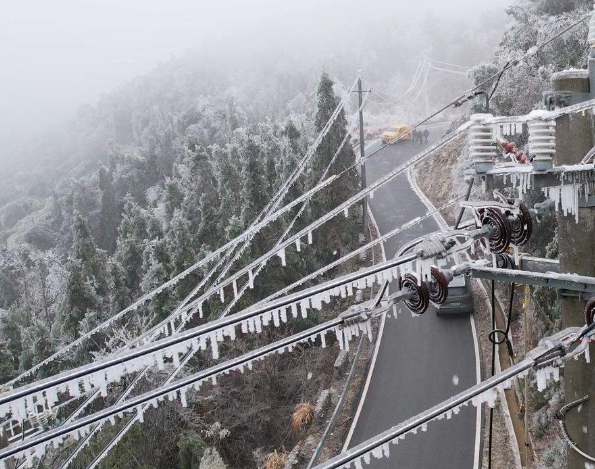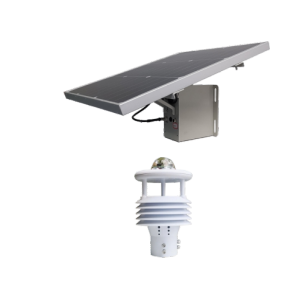Power grid micrometeorology, as a technical term, mainly refers to the phenomenon that certain meteorological parameters (e.g., temperature, humidity, wind speed, wind direction, rainfall, etc.) are particularly enhanced or aberrated in the electric power transmission network, especially in the narrow area of a few kilometers or a few hundred meters around the transmission lines, due to the influence of various natural factors such as topography and geomorphology, ground vegetation, water surface, and so on:
I. Main influencing factors
1, topography and geomorphology: including hills, valleys, rivers, lakes and other surface morphology, which will have an impact on the local airflow, forming a special wind field and temperature field.
2. Ground vegetation: The degree and type of vegetation cover affects heat radiation and water evaporation from the ground, thus affecting local temperature and humidity.
3, the water surface: the water body of the temperature regulation effect is obvious, especially in the lakes and rivers nearby, will form a unique microclimate environment.
II. Impact on the power grid
1, conductor ice: in the cold season, especially in high altitude or high humidity areas, micro-meteorological significantly may lead to ice on the conductor, increase the weight of the conductor and wind load, reduce the energizing capacity, and may trigger flashover, wire failure.
2、Wire Dance: Under specific airflow conditions, the wire may dance, flutter or oscillate, resulting in wire abrasion, oscillation or even breakage.
3, wind deviation: in coastal, mountainous and other areas, due to changes in terrain or wind direction, the wind field may produce a large deviation, resulting in the conductor is subject to lateral wind load increase, which may trigger the tower tilt, collapse and other accidents.
4, reverse bias discharge: in special geological conditions, the local electric field distribution is abnormal, which may trigger reverse bias discharge or even short circuit failure.
III. Recommendations for online monitoring of micrometeorology
In the power grid disaster prevention and mitigation road, for emergency decision-making, emergency response and public safety to provide scientific and technological support, micro-weather online monitoring is urgent, can help power personnel real-time access to local weather information. Our Micro Weather Online Monitoring System< DX-WPS100-QX is mainly composed of three parts: monitoring terminal, communication and system host, which is capable of capturing localized and micrometeorological changes that are difficult to be captured by traditional weather stations, such as temperature, humidity, wind speed, wind direction, rainfall, atmospheric pressure, light radiation and other key meteorological parameters. The monitored data are transmitted to the remote monitoring center through wireless communication module (e.g. 4G/5G, GPRS, CDMA, etc.), and the system host receives the data from the monitoring terminals and stores, counts and analyzes them. When the meteorological parameters are out of the normal range or other abnormalities occur, the system will send out the forecast and warning information through various ways (e.g. SMS, APP push, etc.). In addition, power staff can view data reports, statistical graphs, curve diagrams, etc. through an intuitive user interface, doubling the efficiency of viewing and analyzing weather data.






